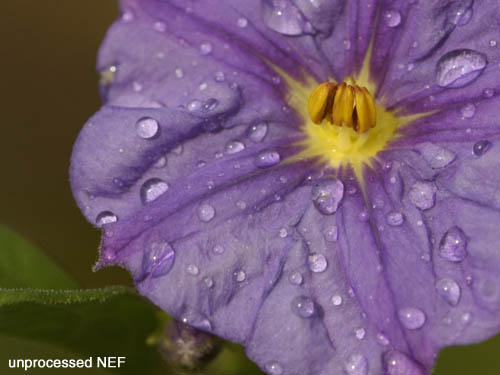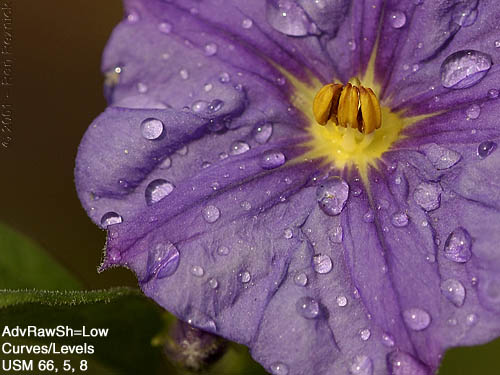|
|
Photoshop Corner #007"Sharpening D1x NEF Files"by Ron Reznick |
|||||||||||||||||||||||||||||||||
 |
|||||||||||||||||||||||||||||||||
|
Please keep in mind when reading this and trying the approaches suggested, that I prefer images that are not over-sharpened, with relatively clean backgrounds and gradients, and no edge-halo (or very little). Obviously, depending on the intended output, different amounts of sharpening should be applied to get the same results, and different papers also affect the results. Experimentation is essential to successful understanding of what works for a given situation. There are several ways to approach sharpening during NEF processing, depending on the ISO used, exposure, subject detail, etc. The NEF, with in-camera sharpening off, is soft and requires some sharpening at full size. I will outline some options and the reasons behind them below. By leaving in-camera sharpening off, you get the lowest levels of noise in the background, but edges can be quite soft. Assuming that you either shot at low-ISO (125 to 250) or exposed properly (or both), by using one of the following UnSharp Mask (USM) settings you can maintain the best smoothness in gradients and backgrounds, and define the edges: |
|||||||||||||||||||||||||||||||||
|
Advanced Sharpening = Unchanged (assuming camera sharpening is OFF) USM settings in Nikon Capture 2 to try |
|||||||||||||||||||||||||||||||||
|
|||||||||||||||||||||||||||||||||
|
At higher ISO or if the image was underexposed and you bring it back using either EV adjustment, curves adjustment, or both, you should use a higher threshold to avoid sharpening the noise. I generally start with a threshold of 8 or 12 and adjust the level of intensity and halo width depending on the image detail, then make any additional adjustments to threshold later once I get the other two parameters right. If you can accept a certain level of noise in the background (depending on exposure and ISO, it can range from acceptable to annoying, due to the fact that Nikon's in-camera or Advanced RAW sharpening algorithm uses a threshold of zero), a crisper edge can be achieved by either shooting with in-camera sharpening set to LOW, or applying LOW sharpening using the Advanced RAW dialog. In this case, the levels of USM that you will want to apply on top of the standard sharpening algorithm are different. I prefer when using Nikon's sharpening (as opposed to USM) that I do not use anything over LOW settings, as otherwise the level of noise in backgrounds and gradients gets to be far too much for me to accept. Your mileage there may vary. USM options in Nikon Capture 2 with sharpening set to LOW |
|||||||||||||||||||||||||||||||||
|
|||||||||||||||||||||||||||||||||
|
When recovering underexposed shots or high-ISO shots, if I use sharpening = LOW, I always use a threshold of at least 12, and generally do not exceed 66, 5 for the other two parameters. Of course, there are always exceptions. These suggestions are intended as a basic guideline. I hope that you experiment and try to find what works best for you. Remember that if the image has a lot of contrast to start out with (or you make levels/curves adjustments to improve color balance as well as contrast), it requires less sharpening to get the best results. |
|||||||||||||||||||||||||||||||||
 |
|||||||||||||||||||||||||||||||||
| RR Design | |||||||||||||||||||||||||||||||||
| Here is a news group for discussing the Outback Photo Essays. | |||||||||||||||||||||||||||||||||
|
|
| For Comments post in our News Group |